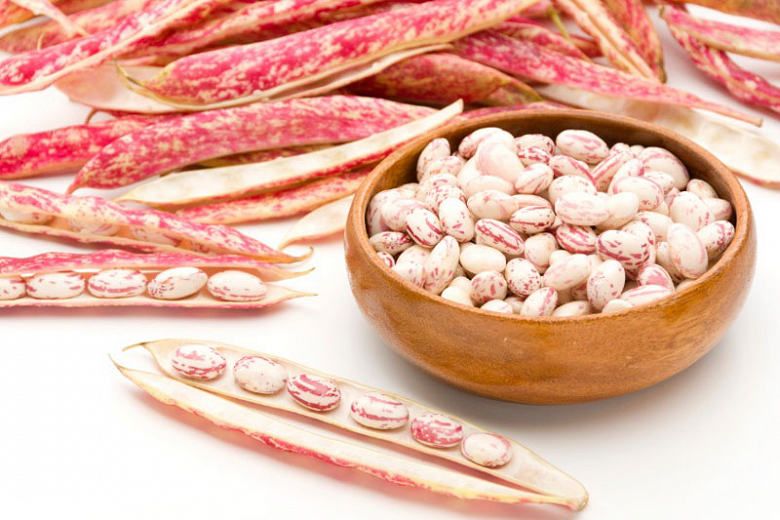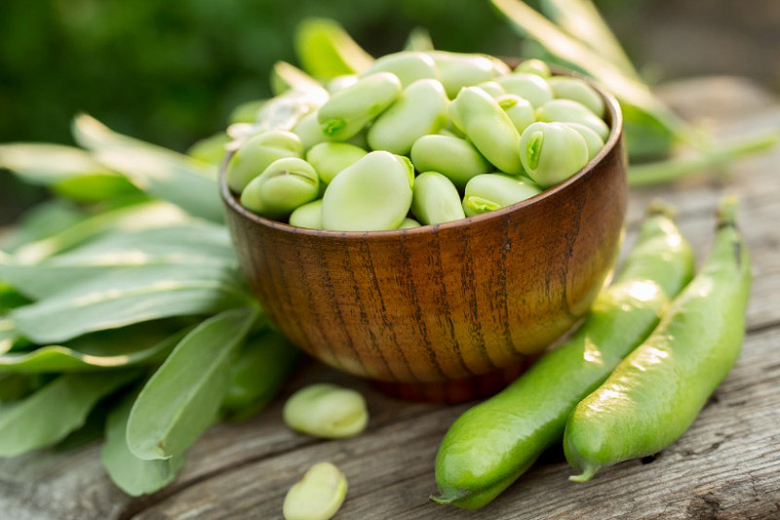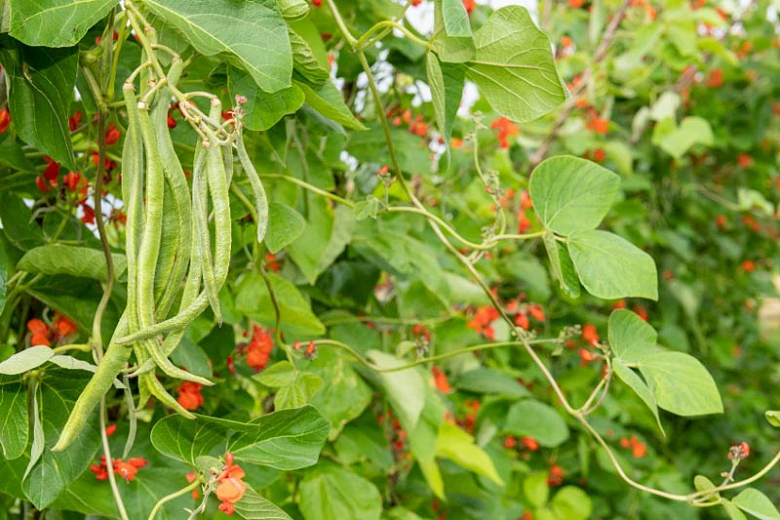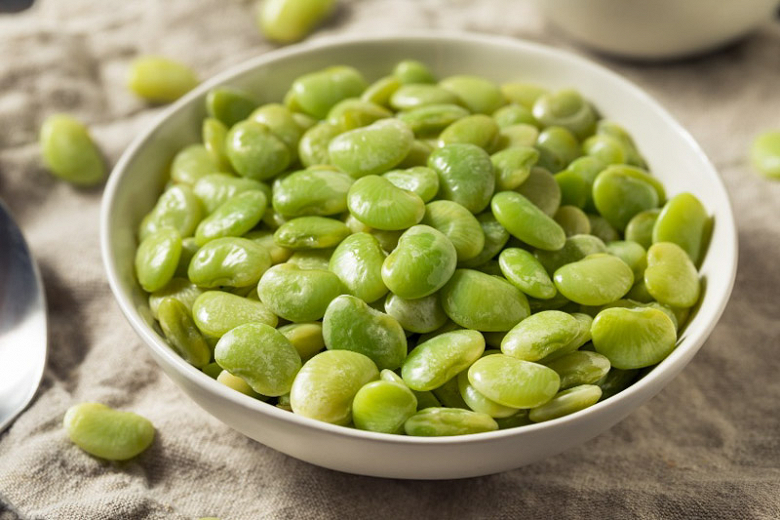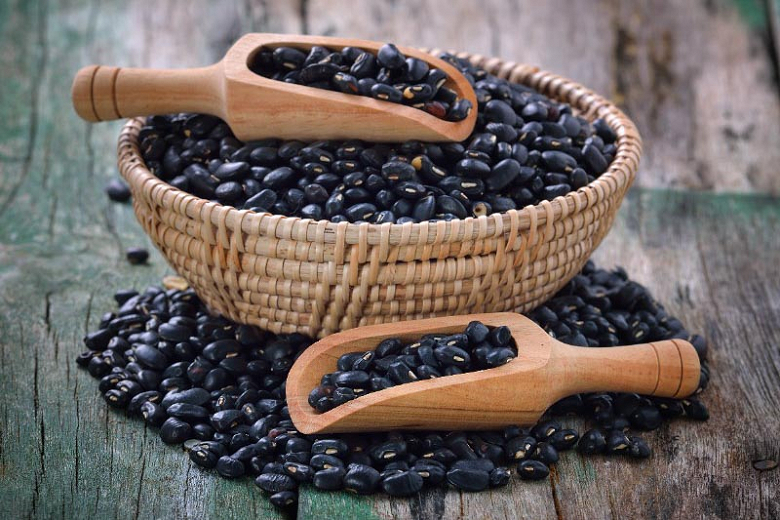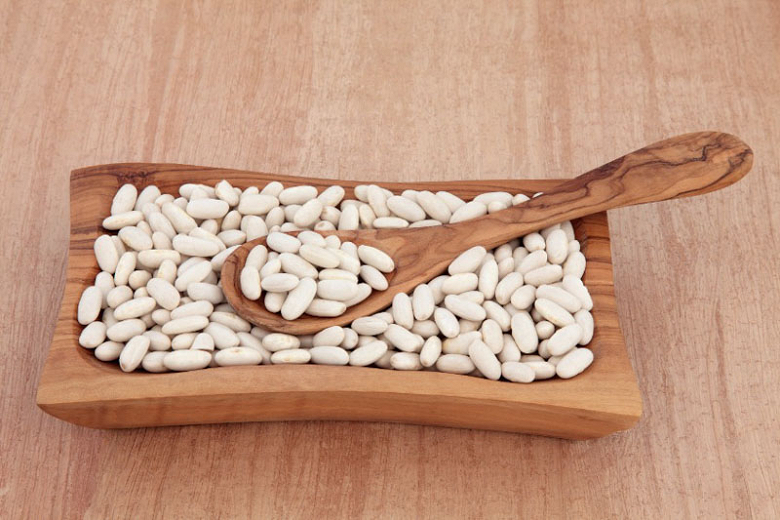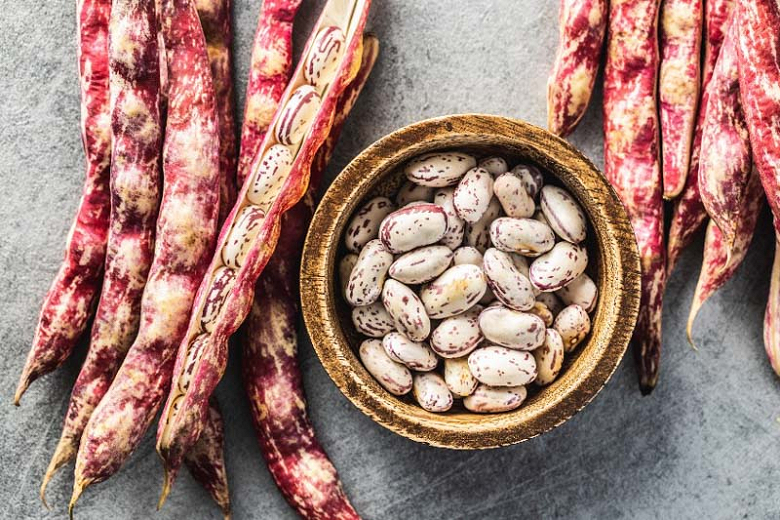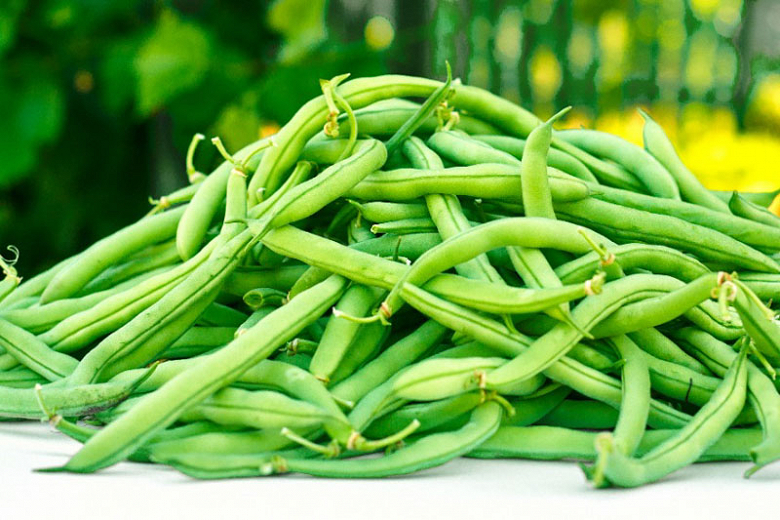Phaseolus vulgaris – Pinto Beans
Delicious and highly nutritious, Pinto beans are the most popular beans by crop production in Northern Mexico and the Southwestern United States. The favorite bean for many Mexican dishes, this tasty legume is a fine addition to the vegetable garden.
Delicious and highly nutritious, Pinto beans are the most popular beans by crop production in Northern Mexico and the Southwestern United States. The favorite bean for many Mexican dishes, this tasty legume is a fine addition to the vegetable garden. Although they look different from the green beans we are used to eating fresh, Pinto beans belong to the same annual species, Phaseolus vulgaris.
What are Pinto Beans?
- Pinto beans belong to the plant family, Fabaceae, also known as the legume, pea, or bean family, which includes lentils, chickpeas, peas, and peanuts.
- Pinto beans are native to Mexico and have been cultivated for over 6000 years.
- Like other bean varieties, Pinto bean plants feature trailing green vines and trifoliate leaves with spade-shaped leaflets.
- They develop attractive but inedible pale yellow pods, speckled with darker yellow, light orange, or bright pink.
- Pods are lengthy and contain beans that are creamy colored and also speckled with yellow, orange, or pink.
- Pinto beans are available in late summer and early fall. However, they are most commonly sold in their dried and canned form.
- Pinto beans can be grown at home in both bush and pole varieties.
- Pinto beans fix nitrogen and add nutrients that improve the soil, benefitting the plants that are growing beside them. Beans are great for heavy nitrogen users.
- Popular Pinto bean cultivars today include Othello, Burke, Hidatsa, and Quincy.
Cooking with Pinto Beans
- When cooked, Pinto beans have an earthy, slightly nutty flavor and meaty texture, becoming buttery when cooked at length.
- Pinto beans can be used as fresh-shelled beans (when young) or in their dried form.
- They are an excellent substitute for navy beans, black beans, cranberry beans, or cannellini beans.
- While Pinto beans do not need to be soaked before cooking, soaking them will significantly speed up cooking time, and the texture of the beans will be at its best. An overnight soak will also make them easier to digest.
- Pinto beans can be steamed, fried, roasted, or simmered.
- Cooked beans can be added to salads, soups, pasta, and gratins.
- Pinto beans are a common filling for burritos, tostadas, or tacos in Mexican cuisine. They are also a popular ingredient in chili con carne.
Health Benefits of Pinto Beans
- While Pinto beans make a flavorful addition to various dishes, they can also provide health benefits.
- Pinto beans are rich in protein and are considered a substantial meat substitute. These proteins benefit the immune system and help maintain healthy bones, hairs, organs, and muscles.
- Pinto beans are also full of antioxidants, which help fight free radicals.
- Pinto beans are loaded with fiber, which may help lower bad cholesterol levels and improve your heart health. Fiber also helps regulate the digestive tract and keep your digestive system healthy.
- They are also rich in carbohydrates and additionally contain folate, zinc, thiamin, magnesium, calcium, and potassium.
- Pinto beans provide a decent source of iron that can help prevent anemia.
- Nutrition Facts (per 100 grams): 140 calories, 26 grams carbs, 9 grams protein, 1 gram fat, 9 grams fiber.
How to Grow Pinto Beans
- Pinto beans grow up to 18-72 in. tall (45-180 cm), depending on the variety. They can be grown as a low bush (bush bean) or a vine climbing a trellis (pole bean).
- Pinto beans perform best in fertile, acidic to neutral (pH ranging from 6.0 to 7.0), moist, well-drained soils in full sun (at least 6-8 hours of direct sunlight per day) in a sheltered location.
- If your soil lacks nutrients, add well-rotted organic matter or compost before planting.
- Keep the soil evenly moist but not soggy. Bean plants do require consistent and even moisture once they have formed flowers.
- Pinto beans are a warm-weather crop and grow best between 65-85°F (18-29°C).
- Pinto beans are sensitive to frost and will suffer damage from even a light frost. Pinto beans perform poorly when temperatures rise above 85°F (29°C).
- Sow seeds outdoors anytime after the last spring frost date after the soil has warmed. At soil temperatures below 60°F (15°C), most bean cultivars germinate poorly and are more susceptible to pests and root rot.
- Do not start Pinto bean seeds indoors because their roots are fragile and may not survive transplanting.
- Soak the seed in compost tea for 25 minutes before planting to help prevent disease and speed germination.
- Sow seed 1½ inches (4 cm), 4 to 6 inches (10-15 cm) apart with at least 2 feet (60 cm) between rows.
- Beans are soil builders. They rarely need any fertilizer during the growing season.
- Mulch to retain moisture, keep the soil cool, and control weeds.
- Rotate crops: Prevent problems by not planting beans in the same location more often than every 3 years.
- Compost plants after harvest. Cut them at the root. The nutrient-rich roots can be tilled back into the soil.
- Beans are susceptible to a few pests. Keep an eye out for aphids, blackflies, cucumber beetles, cutworms, grasshoppers, Japanese beetles, Mexican bean beetle, root-knot nematodes, slugs, snails, spider mites, Stinkbugs, thrips, whiteflies, and wireworms.
- Beans are susceptible to diseases, including anthracnose, bean mosaic virus, powdery mildew, bean root rot, bean rust, and white mold.
When to Harvest Pinto Beans
- Depending on the variety, Pinto beans take 90-150 days to harvest after planting.
- Pinto bush beans mature all at once, but pole beans are harvested on a continuous basis which encourages additional production for a month or two.
- Pinto beans are ready for picking when the bean pods have turned dry yellow-tan.
- Harvest Pinto beans by cutting the pods using clean scissors or a pruning shear.
- After you pick the dried pods from the plants, shell them and remove the painted beans from inside them.
- To store, keep fresh Pinto beans dry and refrigerate for up to 3-4 days. Alternatively, Pinto beans can be frozen and saved for future use.
Best and Worst Companion Plants for Pinto Beans
- Beans are great for heavy nitrogen users. They add nutrients and improve the soil, benefitting the plants that are growing beside them.
- A good example of companion planting is The Three Sisters Garden. Practiced by Native Americans thousands of years ago, this garden includes corn, beans, and squash. The tall corn provides shade for the lower squash but also stops the squash vine borer beetle. Corn also provides support for the bean plants to climb up. The beans enrich the soil with nutrients for both corn and squash. And the large leaves of the squash vines create a protective mulch that helps retain moisture while suppressing weeds. Another added benefit is the prickly vines of the squash deter the raccoons from stripping the corncobs.
- Mexican bean beetles can reduce the production of green beans if allowed to multiply. Their damage is reduced spectacularly when beans are interplanted with other vegetables and herbs.
- Pinto beans can be grown at home in both determinate (bush) and indeterminate (pole) varieties.
Best and Worst Companion Plants for Bush Beans
Best and Worst Companion Plants for Pole Beans
Requirements
| Hardiness | 2 – 11 |
|---|---|
| Climate Zones | 1, 1A, 1B, 2, 2A, 2B, 3, 3A, 3B, 4, 5, 6, 7, 8, 9, 10, 11, 12, 13, 14, 15, 16, 17, 18, 19, 20, 21, 22, 23, 24, A1, A2, A3, H1, H2 |
| Plant Type | Annuals, Fruit |
| Plant Family | Phaseolus – Beans |
| Exposure | Full Sun |
| Season of Interest | Summer (Late)Fall |
| Height | 1' – 6' (30cm – 180cm) |
| Spread | 1' – 2' (30cm – 60cm) |
| Water Needs | Average |
| Maintenance | Average |
| Soil Type | Chalk, Clay, Loam, Sand |
| Soil pH | Acid, Alkaline, Neutral |
| Soil Drainage | Moist but Well-Drained |
